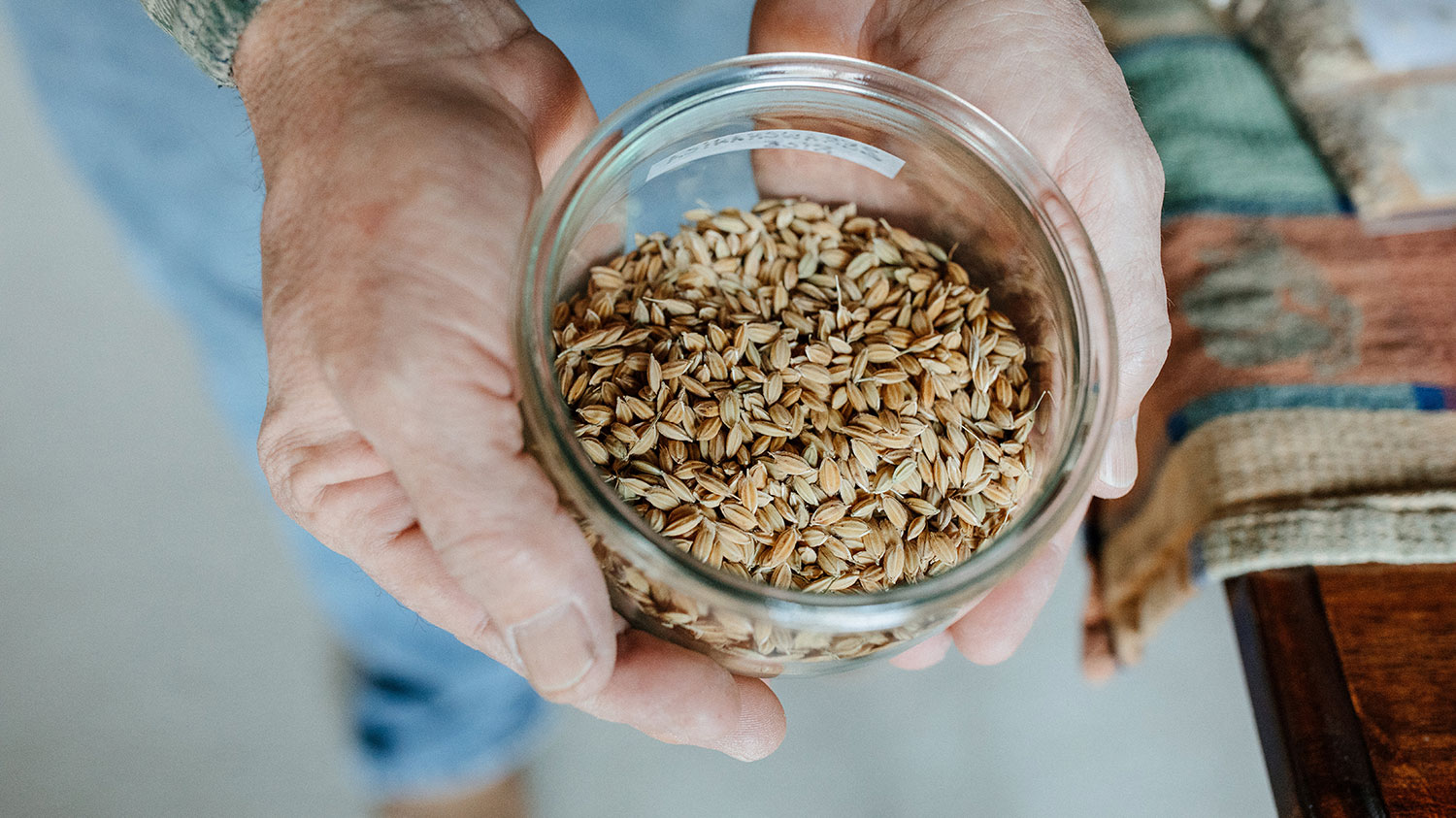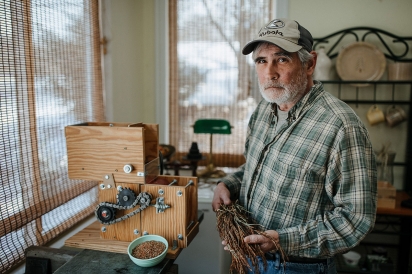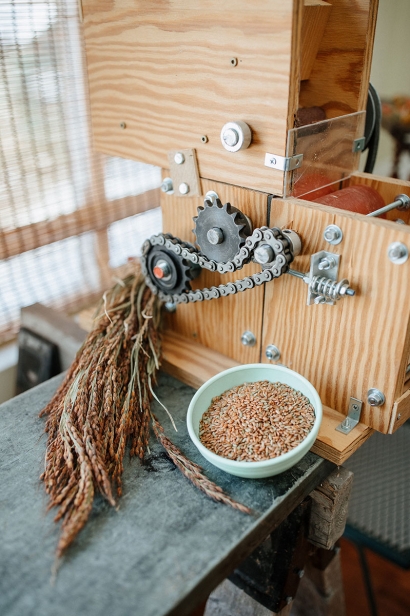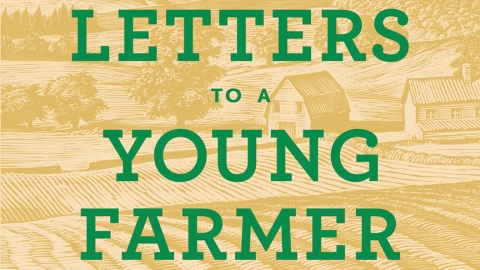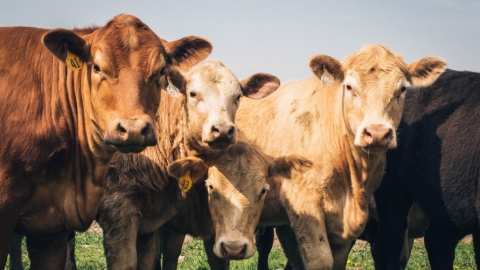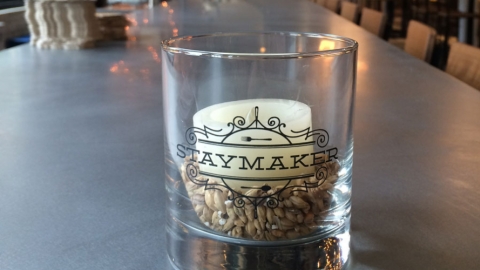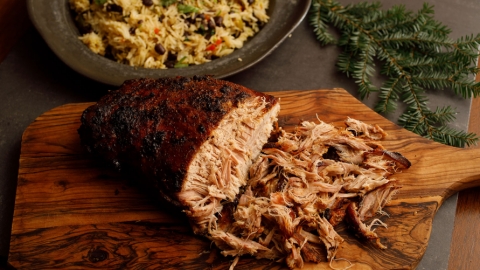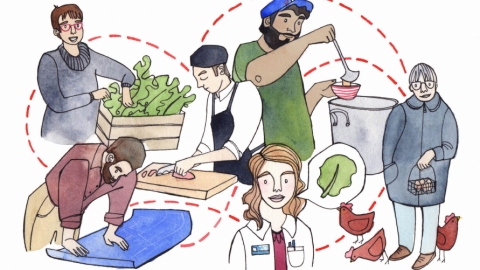Farmers work to rise above the challenges of climate change
Climate change is one name for it.
Global warming is another.
John Sherck, who owns Sherck Seeds in Bristol, IN, uses the term “global weirding” to describe Michiana weather the past few years.
While weather has always had unpredictable moments, it still followed reasonably predictable patterns.
But that seems to have changed, and local producers have new challenges to meet—not just getting their produce to market, but even out of the ground.
“I’ve been growing since the early ’90s,” says Sherck, who grew produce before switching to seeds. “This year’s one of the first times I’ve seen whole fields of soybeans that didn’t get harvested.”
Tim McLochlin, the director of agriculture for Ancilla College and a Marshall County farmer, describes the same thing.
“Here it is January, and a lot of crops are still in the field,” he says. “It’s the result of a winter that hasn’t really happened yet.”
Those cold winter temperatures are key. Precipitation that normally would fall as snow instead falls as ground-softening and eroding rain. And the cold temperatures that normally freeze the soil enough to make harvesting possible just haven’t stuck around for very long, meaning a day’s harvesting can quickly turn into an unproductive quagmire.
Producers just north of the Indiana border face similar issues, especially in the Lake Michigan microclimate that allows for fruit and grapes.
“We expect that with climate change, it will get warmer,” says Mark Longstroth, the small fruit extension educator with the Michigan State University Extension. “We anticipate the growing season is getting longer. … For tree fruit an average bloom date has moved earlier by about three days.”
That might sound like a good thing, but it hides dangers.
“Spring freezes have become a bigger problem” because they can damage fruit that starts growing earlier, Longstroth says.
Facing the challenge
These observations, and more, are confirmed in Purdue University’s Indiana Climate Change Impacts Assessment (ICCIA). The report from that assessment, “Indiana’s Agriculture in a Changing Climate,” released in July 2018, detailed a number of key findings, among them:
Warmer overnight temperatures increase plant respiration, which reduces sugar availability and can interfere with proper pollination, lowering yields.
Heat stress is likely to increase, lowering yields. It also harms livestock physically and decreases natural forage.
The “frost free” season is ending later and beginning earlier, though early planting might not be feasible because fields would be too wet to work.
Fruit and other flowering crops might begin flowering earlier thanks to an earlier spring. However, a killing frost is still possible. (An early freeze can destroy a whole crop of cherries, Longstroth notes).
The list of issues, challenges and fears goes on. But what can be done?
One suggestion from the ICCIA report is planting more winter cereal crops, such as rye, because they can help capture nutrients and absorb water.
Sherck, who works small plots of land to grow for seed, has been planting perennial strips 10 to 12 feet apart that catch runoff and absorb water. These strips are agriculturally productive as well, producing crops such as comfrey and hazelnut.
He also looks beyond our borders for strains of wheat or corn that might grow well here while also being disease- and pest-resistant.
And then there’s the possibility of switching crops.
One of Sherck’s biggest projects is upland rice, which he finds does well in Michiana’s climate. It grows in similar conditions to corn, he says, but doesn’t mind rain as much.
“I look for things that have a good chance of adapting quickly to our region,” he says.
These are the classic solutions. But modern technology can help.
A radical solution
If the climate makes it harder to farm, what if you took it out of the equation altogether?
That’s what Milan Kluko and his son, Daniel, did when they founded Green Spirit Farms in New Buffalo, MI. According to Milan, Green Spirit was the first commercial vertical farm in the Midwest with crops grown stacked on top of one another, without soil, fed with water that contains the nutrients necessary for the plants to thrive. Lighting, moisture, humidity—all carefully controlled for optimal growth (and taste, too).
One of the reasons the Klukos chose New Buffalo was because the power grid is nuclear, producing no carbon emissions, Milan says, and when growing indoors, there is no runoff since most of the water is recycled.
As a result, Kluko says, he can harvest a crop of lettuce in 21 days instead of 60 to 90 days.
He is quick to point out that he does not grow crops that compete with local farmers, but things that typically come from California, Mexico or further away. So instead of your lettuce being flown or trucked in and hitting stores at five or six days old, you can eat produce that’s five or six hours old. And since the food is not grown in a soil-based environment, it uses 98% less water. And it’s local. All of this reduces that crop’s “food print” (Kluko likes that moniker so much that it’s trademarked).
Kluko’s newest project, working with Harvest Moon Sustainable Ventures in the same building as Green Spirit Farms, is taking vertical farming to places where it’s difficult to grow food because of environment or space factors, such as islands or disaster areas (or both: one of Kluko’s project sites is Puerto Rico).
In this iteration, vertical farms are set up inside 40-foot containers, like you might see on a freighter or train. They could be powered by solar panels on top, or with a tow-behind solar generator. In this way, farming can be done anywhere.
Cause for optimism?
As bleak as some of the findings in the ICCIA report, there’s the occasional ray of (non-heat-stressing) sunshine, such as the possibility of crops that could thrive here.
“Today? To not change and not keep up with things is really putting you at a disadvantage,” McLochlin says. “Agriculture is great at solving problems, we’ve been doing it since the first farmer put seed in the ground. But it’s hard to count on anything anymore.”
The ICCIA report echoes that sentiment.
“To remain economically competitive, farmers will need to adapt to these challenges and opportunities. This will mean thinking broadly about the most beneficial crops, management practices and rotations to employ in Indiana’s shifting climate.”


